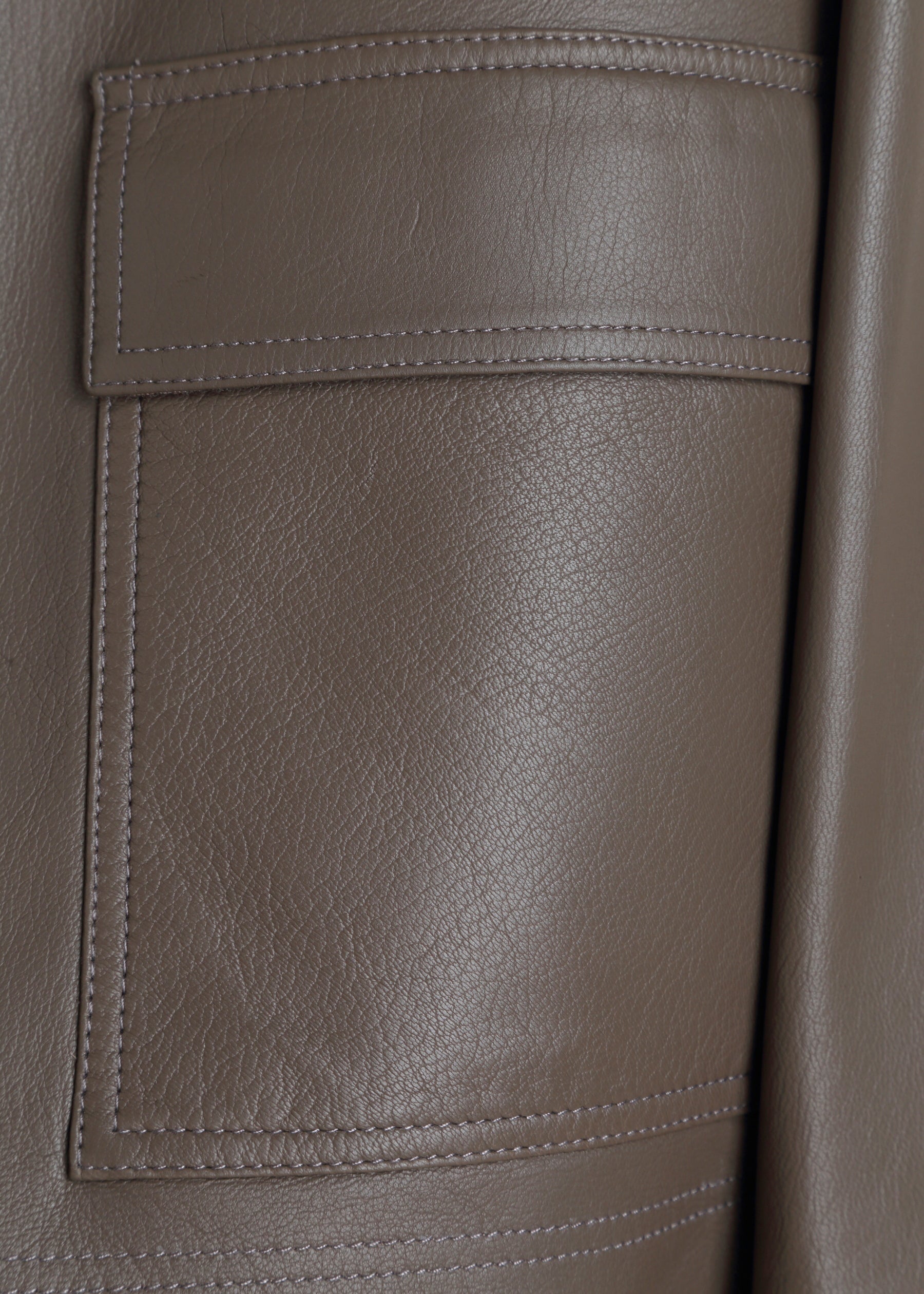Our leather
Sheepskin Leather
Naturally light, soft and supple, with a fine grain. Used for our coats and jackets because it drapes easily and feels comfortable from the first wear. It prefers gentle handling, minimal product and careful storage.
Calfskin Leather
Compact, smooth and resilient, with a tighter grain structure. Used for our footwear: it takes polish elegantly, develops a refined patina and stands up well to regular use when rested and conditioned.
Rule of thumb
- Keep leather away from direct heat sources and prolonged, strong sunlight.
- Avoid overfilling pockets or bags to prevent stretching and misshaping.
- Let leather breathe; avoid long-term storage in plastic covers.
- Always test any product (cleaner, conditioner, polish) on a hidden area first.
Care
Day-to-day care
- After wearing, allow the piece to rest on a broad, padded hanger, away from heat and sunlight.
- Gently smooth the surface with clean hands to relax minor creases.
- Light surface dust can be removed with a soft, dry cloth or very soft brush.
Rain and moisture
- If the garment becomes wet, do not use a radiator, tumble dryer or hairdryer.
- Pat gently with a clean, dry cloth to remove excess water.
- Hang in a well-ventilated room at room temperature until fully dry, then condition lightly if the leather feels tight or slightly stiff.
Cleaning
- For minor marks, use a slightly damp soft cloth, working lightly and evenly, without rubbing in circles.
- Avoid household soaps, alcohol-based products and baby wipes.
- For oil, ink or set-in stains, take the garment to a specialist leather cleaner rather than attempting to spot-treat at home.
Conditioning
Sheepskin leather benefits from occasional conditioning to maintain softness:
- Use a high-quality leather conditioner designed for fine garments.
- Apply sparingly with a soft cloth, working over the surface in thin, even layers.
- Buff gently with a clean cloth to restore a natural lustre.
- Conditioning once or twice per season is usually sufficient, depending on wear.
Storage
- Store on a structured, padded hanger to support the shoulders.
- Cover with a breathable garment bag (cotton or canvas), not plastic.
- Ensure there is space around the garment so it is not crushed or folded for long periods.
Rotation & rest
- Avoid wearing the same pair on consecutive days. Calfskin benefits from time to dry and recover between wears.
- Place cedar shoe trees into the shoes after each wear to help maintain shape, absorb moisture and smooth creases.
Cleaning
- Remove laces (if applicable).
- Brush off surface dust and dirt with a soft horsehair brush.
- For light marks, use a slightly damp cloth, then allow the shoes to dry naturally.
- For more thorough cleans, use a small amount of dedicated leather cleaner, following the product instructions carefully.
Conditioning & polishing
- Apply a neutral or colour-matched cream polish using a soft cloth or applicator brush, working in small circular motions.
- Allow the leather to absorb the cream for a few minutes.
- Buff with a horsehair brush and then with a soft cloth to achieve a soft, natural sheen rather than a high gloss, unless a mirror finish is desired.
- Condition periodically (every few months, depending on wear) with a nourishing leather conditioner, especially in colder or wetter seasons.
Water & weather
Light rain is acceptable if the shoes are properly conditioned, but avoid heavy downpours. If shoes become wet:
- Stuff lightly with plain paper and insert shoe trees once the excess moisture is absorbed.
- Allow to dry naturally at room temperature, away from direct heat.
- Consider a discreet water-repellent spray suitable for smooth calfskin, applied sparingly and tested on an inconspicuous area first.
Soles & edges
- Keep an eye on sole wear; have leather soles re-soled or toe-tapped by a reputable cobbler before they wear through.
- Edge dressing can be used occasionally to keep the welt and edges looking sharp and well-defined.
Storage
- Store with shoe trees inserted, in a cool, dry place.
- Use individual shoe bags or a box that allows some airflow.
- Avoid stacking shoes or crushing the uppers.
What to avoid
For both sheepskin garments and calfskin shoes:
- No direct heat drying (radiators, heated floors, hairdryers).
- No harsh chemicals, bleach, household cleaners or alcohol-based wipes.
- No prolonged plastic storage or vacuum packing.
- No vigorous scrubbing or abrasive sponges.



